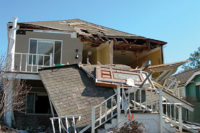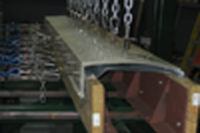For many years, the influence of roofing within our national energy codes has been much less that its impact on annual construction revenues. That’s because energy codes tend to focus on new construction projects while roofing is involved predominantly with existing buildings. As a result, national energy codes like the International Energy Conservation Code (IECC) and the ASHRAE Energy Standard for Buildings (ASHRAE 90.1) have tended to look at roofing from a narrow, new-construction perspective that makes it difficult to apply the code effectively to the re-roofing of existing buildings.
Perhaps the worst example of this disconnect between the new-construction focus of the code and the reality of re-roofing is found in the uninformed language used in the code to describe roof recovers on existing buildings as opposed to roof replacements. For many years, the process of recovering an existing roof was described in the IECC as a process “…where neither the sheathing nor the insulation are exposed.” Sheathing? On a typical flat commercial roof, we have a roof deck on which the roof insulation and membrane are installed, but sheathing is a term usually applied in residential construction to refer to a roof substrate over an attic to which shingles and other steep-slope roof coverings are attached.
The biggest problem with such a poor choice of terminology is that it leads to confusion, in this case on the part of building owners, code officials and roofing contractors. Although the intent of the code for many years was that any re-roofing project requiring a tear off of the existing roofing membrane must be upgraded to the most recent thermal-insulation requirements of the code, the strange reference to “sheathing” caused a lot of unnecessary confusion. In fact, in a 2011 code compliance study conducted by the Center for Environmental Innovation in Roofing (The Center), nearly 40 percent of roofing contractors surveyed held the opinion that commercial re-roofing involving a tear off did not have to meet the latest thermal-insulation standards. Even though the obvious intent of the IECC was to require the installation of higher levels of insulation whenever the existing roof covering is removed, this intent was poorly understood.
Fortunately, at last fall’s final hearings for the 2015 version of the IECC, code officials from across the country approved new definitions for roofing and re-roofing that remove the cryptic reference to “sheathing” once and for all. Starting with the 2015 IECC, the code will feature the following relevant and straightforward definitions for all re-roofing activity:
- Re-roofing: The process of recovering or replacing an existing roof covering. See “Roof recover” and “Roof replacement.”
- Roof Recover: The process of installing an additional roof covering over a prepared existing roof covering without removing the existing roof covering.
- Roof Replacement: The process of removing the existing roof covering, repairing any damaged substrate and installing a new roof covering.
In addition, these easy-to-understand definitions for roof recover versus roof replacement were further supported by the addition of a new and clearly stated requirement that, although roof recovers continue to be exempted from new insulation requirements, all roofing involving a tear off must include the addition of insulation to meet today’s higher standards:
- Roof Replacement: For roof replacements, where the existing roof assembly is part of the building thermal envelope and contains insulation entirely above deck, roof replacement shall include compliance with the requirements of (the minimum U- or R-value tables in this code).
The best news about this important code change is that we don’t have to wait until state and local jurisdictions start to adopt the 2015 code to begin using these new requirements. Because these changes were approved as clarifications to the existing code language, the new wording only supports what already should be the code-approved approach to energy-efficient re-roofing. That means that organizations like the Center and other energy advocates can start to publicize and promote this new language starting today in any jurisdiction using any past version of the IECC. And even better, similar clarifying language was added to ASHRAE 90.1 so that both the IECC and ASHRAE 90.1 are now singing out of the same hymn book when it comes to re-roofing.
As an added bonus, and in recognition of the importance of roofing in national energy policy, the 2015 version of the IECC and its corresponding version of ASHRAE 90.1 now contain the same minimum R-values for the typical commercial low-slope roof with insulation located above the roof deck. These new minimum R-values replace different and contradictory R-value tables in previous versions of the IECC and ASHRAE 90.1 that also added to the confusion regarding insulation requirements for re-roofing. In fact, these new R-values for roofs with insulation above deck were singled out to be part of a separate table apart from all other building envelope requirements, which also will make them easier to find and apply. The new minimum R-value requirements for roofs with insulation above the roof deck are shown in Table 1.
Taken together, these improved re-roofing definitions and uniform commercial roof R-values will make it much easier to bid and sell commercial re-roofs. With effective compliance and enforcement, these code advances will eliminate or reduce the possibility of a competitor “low balling” a re-roofing bid by ignoring the code’s R-value requirements. And these same improvements will make it easier for you to explain and sell the value you’re providing to a building owner in the way of an energy-efficient, code-compliant roof that will last for many years to come. And for all of us, these new code requirements show that the building code community is starting to take a serious look at our industry as a provider of energy-efficient solutions for our nation.






